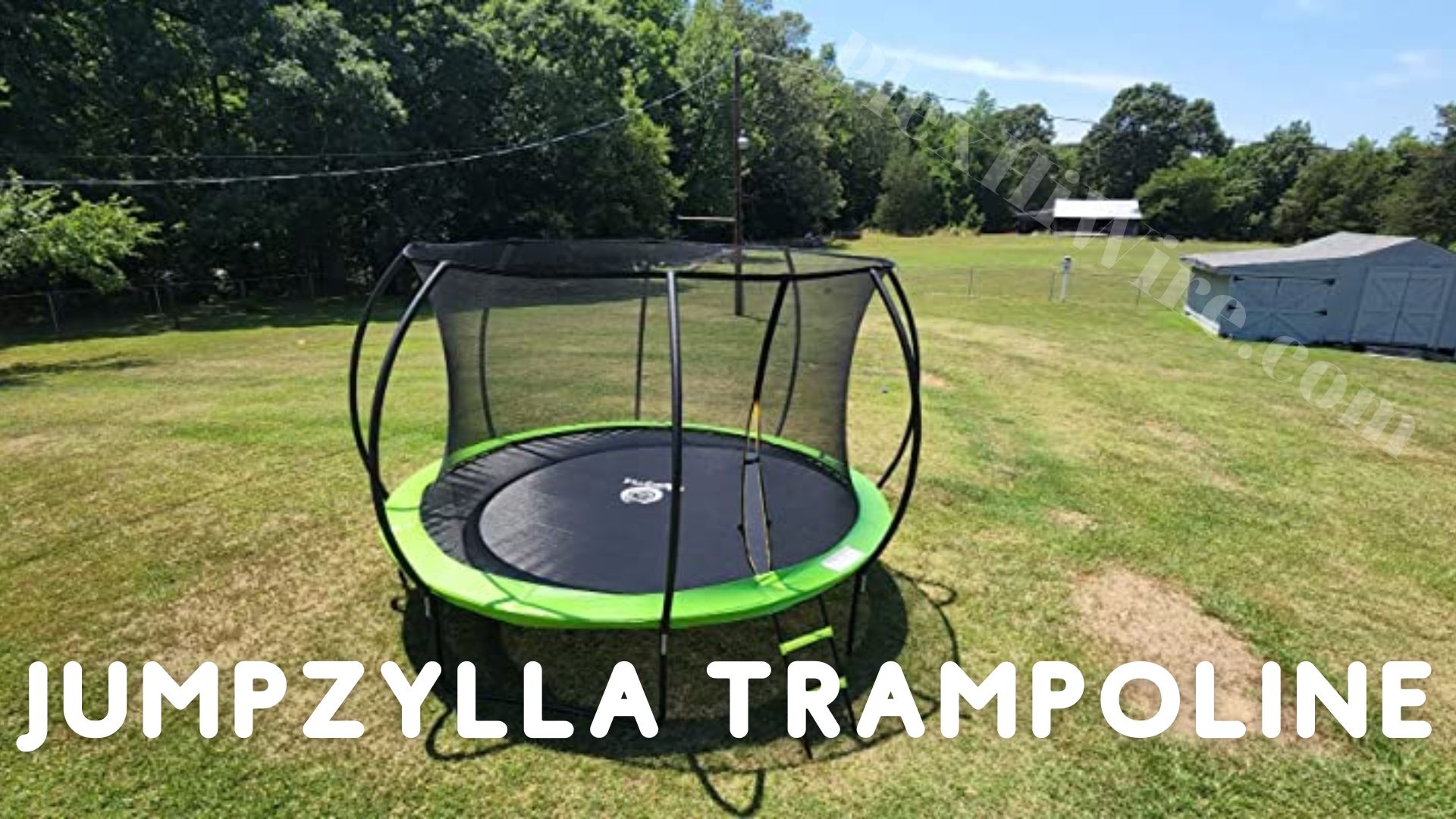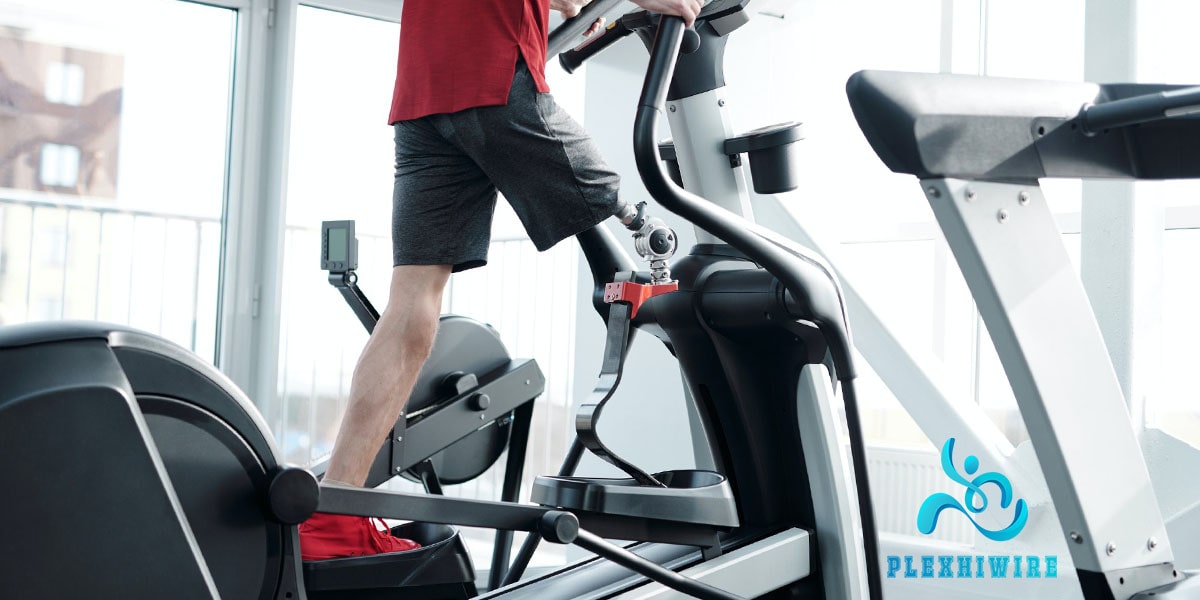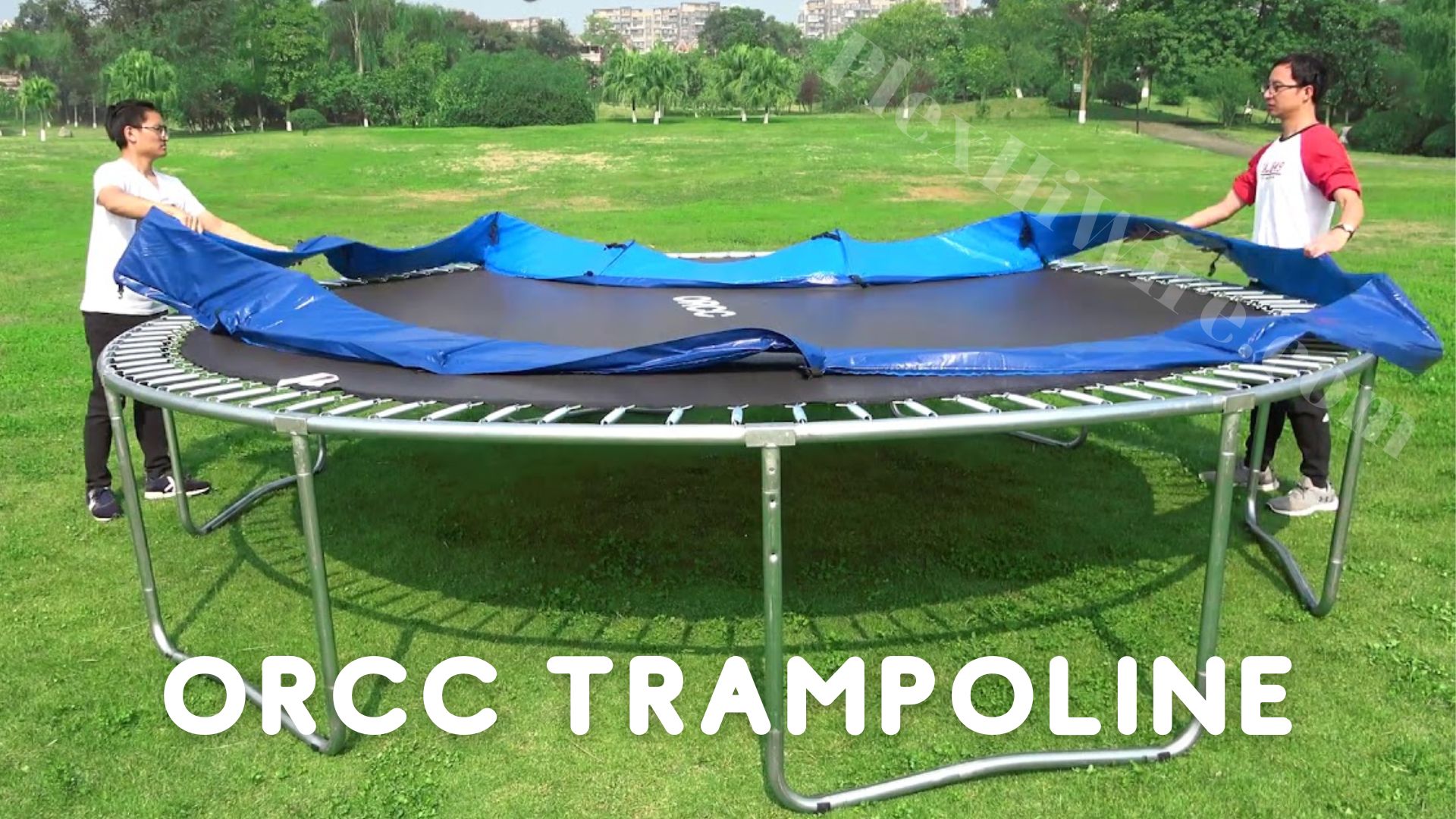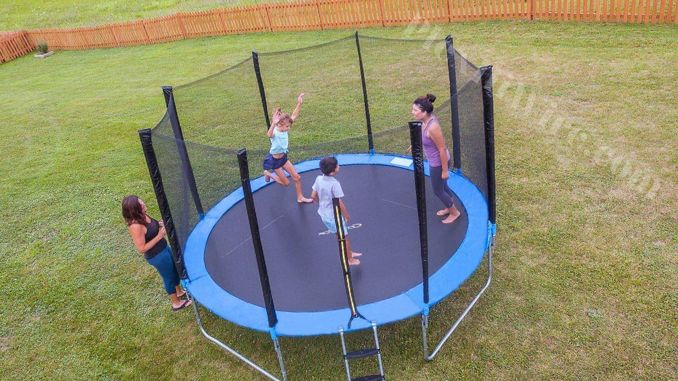Tabata Mean
Do you ever feel like your workouts are stuck in a rut? Maybe the same exercises have become increasingly boring and uninspiring. Have you ever heard of Tabata Training? It’s a high-intensity interval training regimen that provides an effective, challenging, and time-efficient way to get fit. So, What does Tabata mean?
Tabata is a popular workout focused on high-intensity interval training (HIIT). It involves bursts of intense activity that last for 20 seconds followed by 10 seconds of rest. This pattern repeats itself for 4 minutes and helps to quickly get your heart rate up, burn calories, and provide an effective overall workout.
This post will explore what Tabata mean, how it works, and the potential benefits it can provide on your journey towards optimal health. So if you’re curious about maximizing your workout results in less time – keep reading!
- What Does “Tabata” Mean?
- Benefits of Tabata Training
- How To Do Tabata Workouts Properly
- How To Do Tabata With an Elliptical Machine
- Variations on Tabata Training
- FAQs
- What are the disadvantages of Tabata mean?
- How many calories does 20 minutes of Tabata burn?
- What nutrition plan should be followed when doing a Tabata workout?
- Is Tabata good for beginners?
- Is Tabata always 4 minutes?
- What is HIIT and how does it differ from Tabata?
- Is it necessary to rest between Tabata workouts?
- Is it necessary to use a timer when doing a Tabata workout?
- Conclusion
What Does “Tabata” Mean?
Tabata is a form of High-Intensity Interval Training (HIIT) that consists of 20 seconds of hard work followed by 10 seconds of rest. During the 20-second work period, you should push your body as hard as possible and reach maximum intensity, while during the 10-second rest period, you should allow your heart rate to recover before starting again.
This cycle typically repeats eight times in total for a 4-minute Tabata session. It can be used with any kind of exercise like burpees, mountain climbers, squats, and running drills. Tabata can also be used for cardiovascular exercises such as cycling or rowing machines.
The idea behind Tabata is to get the most out of your workout in a short amount of time, as it can be completed in four minutes or less. It is a popular form of exercise among athletes and gym-goers alike who are looking for an efficient and effective way to increase their strength, endurance, and overall fitness levels. Tabata can also be used to supplement regular workouts or just provide a quick burst of energy when time is limited.
The term “Tabata” was named after Japanese scientist Dr. Izumi Tabata who discovered its effectiveness through a study he conducted in 1996. The results showed that participants who did four minutes of high-intensity interval training (HIIT) for four days per week saw increases in their aerobic capacity and anaerobic capacity as well as greater improvements in their VO2 max compared to those who did moderate intensity cardio exercises. These findings have been supported by further studies, making Tabata one of the most popular forms of HIIT exercise today.
The key to success when using Tabata is consistency, as it requires focused effort and energy for the entire four minutes of your workout. You should also make sure to properly warm up and cool down before and after each session in order to avoid injury and maximize performance. With these safety tips in mind, Tabata can be an effective way to get a great cardio workout in a short period of time.
Benefits of Tabata Training
Increased fat burning
Tabata workouts are an effective way to burn fat because they involve intense bursts of exercise that work your whole body. During a Tabata workout, you will do one exercise for 20 seconds before resting for 10 seconds. This high-intensity interval training (HIIT) is proven to help increase metabolic rate and calories burned during and after the workout.
In addition, it is more time efficient than traditional endurance training as you can burn up to nine times more fat in four minutes of a Tabata workout than a 30 minute moderate intensity session. As well as helping to increase your overall daily calorie expenditure, Tabatas also activate fast-twitch muscle fibers which helps promote the development of lean muscle mass and further increases metabolism.
Improved cardiovascular health
Tabata workouts help to increase cardiovascular endurance, as the high-intensity interval training makes the heart work harder than it does during traditional aerobic exercises. This helps strengthen and condition your heart muscle, reducing your risk for heart disease and other cardiovascular issues.
Additionally, the short bursts of intense activity cause a “heart rate spike” that can help to reduce resting heart rate over time. This may mean lower levels of bad cholesterol and higher levels of good cholesterol in the body which further enhances overall cardiovascular health. Plus, research has shown that regular Tabata workouts can lead to improved blood pressure readings both during exercise and at rest. All these changes promote better overall health and can provide protection against diseases like stroke or hypertension.
Improved coordination and agility
One of the most important benefits of Tabata Workout is improved coordination and agility. With Tabata, you are moving quickly from one exercise to the next, which requires quick decision making and fast reflexes. This kind of agility helps improve your overall performance by improving your balance, reaction time, and ability to make split-second decisions.
Moreover, because Tabata incorporates a lot of different exercises into a single workout session, it can help you become better at coordinating all of your muscles in order to perform complex movements. This increased coordination can help you move faster, jump higher, and be able to do more complex stunts and tricks. So whether you’re an athlete or someone who just wants to get in shape quickly and efficiently, incorporating Tabata into your workout routine can help you become more agile and coordinated.
Finally, because Tabata workouts are usually done in a group setting, it also helps improve your coordination with others as well. Working out with other people encourages an atmosphere of motivation and communication, which further increases the effectiveness of the workout by helping everyone stay on track and challenge each other to do their best. With improved coordination and agility, you’ll be able to perform at higher levels in all aspects of your life!
Improved muscular endurance
Tabata workouts help improve muscular endurance by focusing on short bursts of high-intensity exercise. During a Tabata workout, exercisers are asked to push themselves at maximum effort for 20 seconds and then rest for 10 seconds — repeating this cycle eight times. This type of interval training helps the muscles become more efficient over time and recover faster between sets. It also increases the body’s ability to burn fat and build muscle in an efficient manner.
Increased muscular endurance can help reduce post-exercise soreness and improve overall recovery time. People who regularly incorporate Tabata into their fitness regimen often find that they have greater stamina and stronger muscles, allowing them to reach new levels of performance.
Increased anaerobic and aerobic capacities
Tabata workouts help increase anaerobic and aerobic capacities because it is a form of high intensity interval training (HIIT). This type of exercise involves repetitive bouts of short duration, high intensity exercises followed by shorter rest periods. By pushing the body to its limits during these brief but intense intervals, Tabata workouts can lead to greater oxygen uptake, increased muscle strength and endurance, improved performance in various physical activities, increased fat burning capacity, higher levels of endorphins that result in a feeling of euphoria and overall better health.
In addition, studies have found that engaging in HIIT workouts like Tabata may help reduce blood pressure and cholesterol levels as well as improve mental focus and clarity. All combined, these factors make Tabata an excellent way to improve both anaerobic and aerobic capacities.
Tabata workouts also help increase anaerobic and aerobic capacities because they involve a high level of intensity and can be performed in a relatively short period of time. This means that Tabata workouts are able to provide significant benefits with minimal time commitment, making them ideal for busy individuals who want to get the most out of their workout routine.
Tabata workouts promote increased anaerobic and aerobic capacities due to the fact that they can be modified according to individual fitness levels and goals. This means that Tabata exercises can be tailored to an individual’s fitness level, allowing them to gradually increase their intensity as they become stronger and fitter. This helps ensure that individuals are able to push themselves safely and efficiently while still receiving maximum benefit from the exercise.
By taking the time to incorporate Tabata workouts into your regular routine, you can expect to experience improved aerobic and anaerobic capacities, increased muscle mass and strength, improved power output and muscular endurance, as well as elevated anaerobic thresholds. With dedication and commitment, you’ll soon be reaping all of the physical benefits that Tabata training has to offer.
How To Do Tabata Workouts Properly
Warm Up: Before you start your Tabata workout, make sure to warm up with a light cardio activity such as walking or jogging. This will help loosen your muscles and get your heart rate up to the right level.
Set Up: For each exercise, set a timer for 8 rounds of 20 seconds of work followed by 10 seconds of rest. Perform each exercise for 8 rounds before moving on to the next one.
Workouts:
- Squats – Stand with your feet slightly wider than shoulder-width apart and lower into a squat until your thighs are parallel with the ground. Push through your heels as you stand back up and repeat as quickly as possible during the 20 second intervals.
- Burpees – Start in a standing position. Drop into a squat and place your hands on the ground in front of you. Kick your feet back so that you’re in a push-up position. Quickly jump your feet back up to your hands and stand up, jumping as high as possible at the top of the motion. Repeat as quickly as possible during the 20 second intervals.
- Push-Ups – Get into a plank position with your hands slightly wider than shoulder-width apart. Lower yourself down until your chest lightly touches the floor before pushing yourself back up while keeping your core engaged throughout the movement. Repeat as quickly as possible during the 20 second intervals.
- Mountain Climbers – Start in a plank position with your shoulders over your hands. Quickly bring one knee up towards your chest and then switch legs, bringing the other knee forward. Alternate as quickly as possible during the 20 second intervals.
Cool Down: After your workout, be sure to cool down with some gentle stretches or a light jog for 5-10 minutes. This will help prevent soreness and fatigue after your Tabata workout.
See more: This 20-Minute Tabata Workout
Tips When Practicing Tabata Properly, Safely:
- Warm up first – Before starting Tabata, it’s important to warm up for 5-10 minutes. This can include dynamic stretching or light cardio activities like jogging in place or jump roping.
- Ease into It – During the Tabata intervals, don’t try to go all out from the very start; ease into them gradually and steadily build up your intensity as you go.
- Use Proper Form – Make sure you are using proper form when performing each exercise to make sure that you are getting the most out of your workout and avoiding any injuries.
- Rest When Needed – If you need a break during an interval, don’t be afraid to take it. You can always pick up where you left off when you’re ready.
- Hydrate – Tabata is a high intensity workout so it’s important to keep hydrated with water throughout the session.
- Cool Down & Stretch – After completing your Tabata workout, take at least 5 minutes to cool down and stretch your muscles to help prevent soreness and injury.
How To Do Tabata With an Elliptical Machine
Warm Up: Before beginning, it is important to do a few minutes of light cardio to warm up your muscles and prepare them for the workout ahead.
Set the Machine: Adjust the settings on your elliptical machine so that you can reach maximum effort (resistance and speed) during the 20 second intervals.
Start Exercise: After warming up, start exercising at maximum effort for 20 seconds followed by 10 seconds of rest. Repeat this 8 times for a total of 4 minutes. Make sure to focus on proper form throughout each interval and that you’re pushing yourself as hard as possible during the active intervals.
Cool Down: After completing your Tabata workout, it is important to do a few minutes of light stretching and cooldown for your muscles.
See more: How To Use An Elliptical Machine
Variations on Tabata Training
Tabata exercises are a great way to get an effective and intense workout, but doing the same workouts over and over again can get boring. Fortunately, there are plenty of variations available that you can use to keep your Tabata workouts fresh and exciting! Here are some ideas:
4-Minute Workout (Tabata Sprint): This Tabata variation is a great way to get your heart rate up and burn calories quickly. For this exercise, you’ll perform 20 seconds of high-intensity work followed by 10 seconds of rest for four minutes. You can do this with any type of cardio exercises like running, jumping rope, or bike sprints.
Interval Training: Interval training is another type of Tabata workout that involves alternating between sets of different exercises at intervals throughout the session. For example, you could start with 30 seconds of push-ups followed by 30 seconds of squats for four minutes total. Then move on to something else like burpees or mountain climbers and repeat the process again until you complete your desired number of rounds or sets. This type of workout allows you to challenge your body in different ways while still getting a total-body workout.
HIIT Training: High intensity interval training (HIIT) is a form of Tabata that involves short bursts of intense exercise with periods of rest or recovery in between. An example of HIIT could be running at full speed for 30 seconds followed by one minute of walking or jogging and repeating this process four times within the span of eight minutes, which would provide an effective full-body workout.
Circuit Training: Similar to HIIT, circuit training combines multiple exercises into a series that are performed back-to-back with little rest in between. This type of Tabata session can involve cardio drills like jumping jacks, burpees, and mountain climbers as well as strength-training exercises like squats, lunges, and bicep curls. This type of workout is great for those looking to tone their body while getting a good cardio workout.
Kettlebell Workout: Kettlebells are incredibly versatile pieces of equipment that can be used to perform various exercises during Tabata workouts. For example, you could do 20 seconds of kettlebell swings followed by 10 seconds of rest for four minutes or alternate between sets of kettlebell squats and shoulder presses for an effective full-body routine. Adding kettlebells into your Tabata workouts is a great way to add more intensity and challenge yourself further.
You can also mix up your Tabata workouts by alternating between different types of exercises and varying the amount of rest time in between sets. For example, one day you could do four rounds of 30 seconds of jumping jacks followed by 10 seconds of rest and another day you could do four rounds of 15 seconds of burpees with 20 seconds of rest. As long as you’re challenging yourself and pushing your body to its limits, you’ll get a great workout no matter what type or variation of Tabata training you choose to do.
See more: This Tabata-Style Workout Will Hit Your Entire Body
FAQs
What are the disadvantages of Tabata mean?
The main disadvantage of Tabata is that it can be quite demanding and exhausting. It requires a high level of intensity and commitment, which may not suit everyone. Additionally, if it’s not done properly with proper form, it can increase the risk of injury due to the high-intensity nature of the workout. Furthermore, if you don’t perform each exercise correctly or push yourself hard enough during each set, then you won’t get the maximum benefit from the workout. Finally, since it’s an intense form of exercise, people with pre-existing medical conditions should always consult their doctor before beginning any kind of exercise program.
How many calories does 20 minutes of Tabata burn?
The number of calories burned by a person during 20 minutes of Tabata can depend on various factors, such as the intensity of the exercise and the individual’s body weight. Generally speaking, a person could burn anywhere from around 100 to 200 calories in 20 minutes of Tabata. However, this estimation could be higher or lower depending on the individual’s physical fitness level and how hard they push themselves while doing Tabata.
Note that calorie burn is not always an accurate measure of fat loss and overall health; what matters more is consistency with your workout program and healthy lifestyle habits. Regularly engaging in Tabata can improve cardiovascular endurance, strength, power, speed, agility, coordination and flexibility. Aside from burning calories during your workouts, the other benefits of Tabata are well worth the effort.
For best results, it is important to ensure that you are doing your Tabata exercises correctly and safely. It is also recommended that you warm up for 5-10 minutes before starting your workout session. This will help prepare your body for the physical demands of the exercise and prevent injury. Make sure to rest between each set of exercises and to hydrate throughout your workouts. With regular practice and dedication, 20 minutes of Tabata can be an effective way to burn calories while also improving overall health and fitness levels.
What nutrition plan should be followed when doing a Tabata workout?
When doing a Tabata workout, it is important to make sure that you are adequately fueled for your workouts. This means eating a balanced diet of complex carbohydrates, lean proteins, and healthy fats. Eating before a Tabata workout is not necessary; however, if you feel like you need some fuel before your session then having a small snack such as a piece of fruit or energy bar may help.
To recover from the intense exercise during Tabata, it is important to refuel afterward with high-quality protein and complex carbohydrates within 30 minutes of finishing. Protein helps repair muscles and encourages growth while complex carbs replenish glycogen stores in the muscles which were depleted during the workout. Additionally, drinking plenty of water throughout and after exercising is essential for keeping the body hydrated.
Overall, following a balanced nutrition plan and staying hydrated are important aspects of any Tabata workout routine. Eating enough nutrient-dense foods helps to provide your body with the energy it needs to keep pushing during intense exercise sessions, as well as promoting muscle recovery afterward. And by drinking plenty of water you can help ensure that your body is properly hydrated and functioning optimally.
Is Tabata good for beginners?
Yes, Tabata is an excellent training program for beginners. The short duration of each exercise makes it ideal for those who may not have much time to commit to a workout routine. Additionally, the intensity level of each interval can be adjusted so that even beginners can find success with this type of exercise. Furthermore, because Tabata emphasizes quality over quantity, it gives beginners the opportunity to focus on perfecting their form before moving onto more advanced exercises. Overall, Tabata is a great option for any beginner looking for an effective and efficient way to get in shape.
Is Tabata always 4 minutes?
No, Tabata can be any length of time, but the most common length is four minutes. This is because four minutes is the perfect amount of time to get a good workout in without feeling too overwhelmed or too exhausted. However, if you feel like you can handle more, you can always extend the length of your Tabata. Just remember to keep the intensity high for the full duration of the workout. Depending on your fitness level, you may want to start with a shorter Tabata and work your way up to four minutes.
For more advanced athletes, it is also possible to do multiple rounds of Tabata in one workout session. This can be a great way to really challenge yourself and push your limits. No matter what length you choose for your Tabata workouts, be sure to stay consistent and focused throughout the entire duration of the workout. That is the key to getting the most out of any type of exercise!
What is HIIT and how does it differ from Tabata?
HIIT (High-Intensity Interval Training) is a type of interval training that alternates between short bursts of intense exercise followed by a period of rest or active recovery. HIIT focuses on high-intensity exercises such as sprinting, jumping jacks, burpees, and other full-body movements. These higher intensity bursts not only increase calorie burn during the workout but also afterward as your body works to bring itself back to its pre-workout state. This can result in more calories burned hours after completing the workout compared to longer duration steady state cardio.
Tabata is a variation of HIIT workouts that involve an even shorter work period of 20 seconds followed by 10 seconds of rest for 8 rounds resulting in 4 minutes of work. While HIIT workouts can vary in duration and intensity, the focus of a Tabata is on strength rather than metabolic resistance training. The goal of this type of interval training is to increase muscle power output as well as muscular endurance instead of focusing solely on burning calories.
HIIT provides a unique combination of both cardio and strength exercises, while Tabata is more focused on increasing muscular endurance through shorter intervals at higher intensity levels. Both techniques provide great benefits for losing weight and building muscle.
Is it necessary to rest between Tabata workouts?
Yes, it is important to rest between Tabata workouts. Resting allows the body to recover and rebuild muscle tissue, which can help you get better results from your training. Additionally, adequate rest helps reduce fatigue and prevent injuries from overtraining. It is recommended to take at least 24 hours of rest between Tabata workouts or alternate days of high-intensity training with low-intensity or active recovery sessions. This will give your body time to repair itself and prepare for the next workout. Try to make sure you are getting enough sleep each night in order to stay energized and maximize the benefits of your exercise routine.
Is it necessary to use a timer when doing a Tabata workout?
Yes, using a timer is essential when doing a Tabata workout. Timers are used to help keep track of the interval times for each exercise and make sure that you don’t lose count or spend too much time on one exercise. Using a timer allows you to stay in control of your workout, so it’s important to use one when doing a Tabata.
You can find simple timers online, as well as apps that allow you to set up specific intervals for each exercise and follow along with the exercises during your workout. Alternatively, you can also purchase an interval timer specifically designed for Tabata training if needed. Whichever option you choose, having a reliable timer will help ensure that you get the most out of each Tabata session.
Conclusion
So, what does Tabata mean? In short, Tabata training is a high-intensity interval training (HIIT) method that offers numerous benefits for athletes and recreational exercisers alike. It can improve cardiorespiratory fitness, increase fat burn during exercise, boost muscular endurance, and provide an efficient alternative to traditional cardio workouts. With its numerous benefits, it’s no wonder why this form of training has become so popular in recent years.
It is important to remember that even though the Tabata protocol can be highly effective, it should not replace other types of exercise. Instead, you should think of it as an addition to your existing workout regime. Additionally, if you’re just starting out with a new exercise routine or are recovering from an injury, it is recommended that you start off slowly and gradually increase the intensity level of your exercises.
By following these guidelines, adopting a Tabata routine into your fitness regime will not only help you get in shape faster but it will also help reduce the risk of injury while ensuring that your workouts remain challenging yet enjoyable. Thank you for reading our article!







